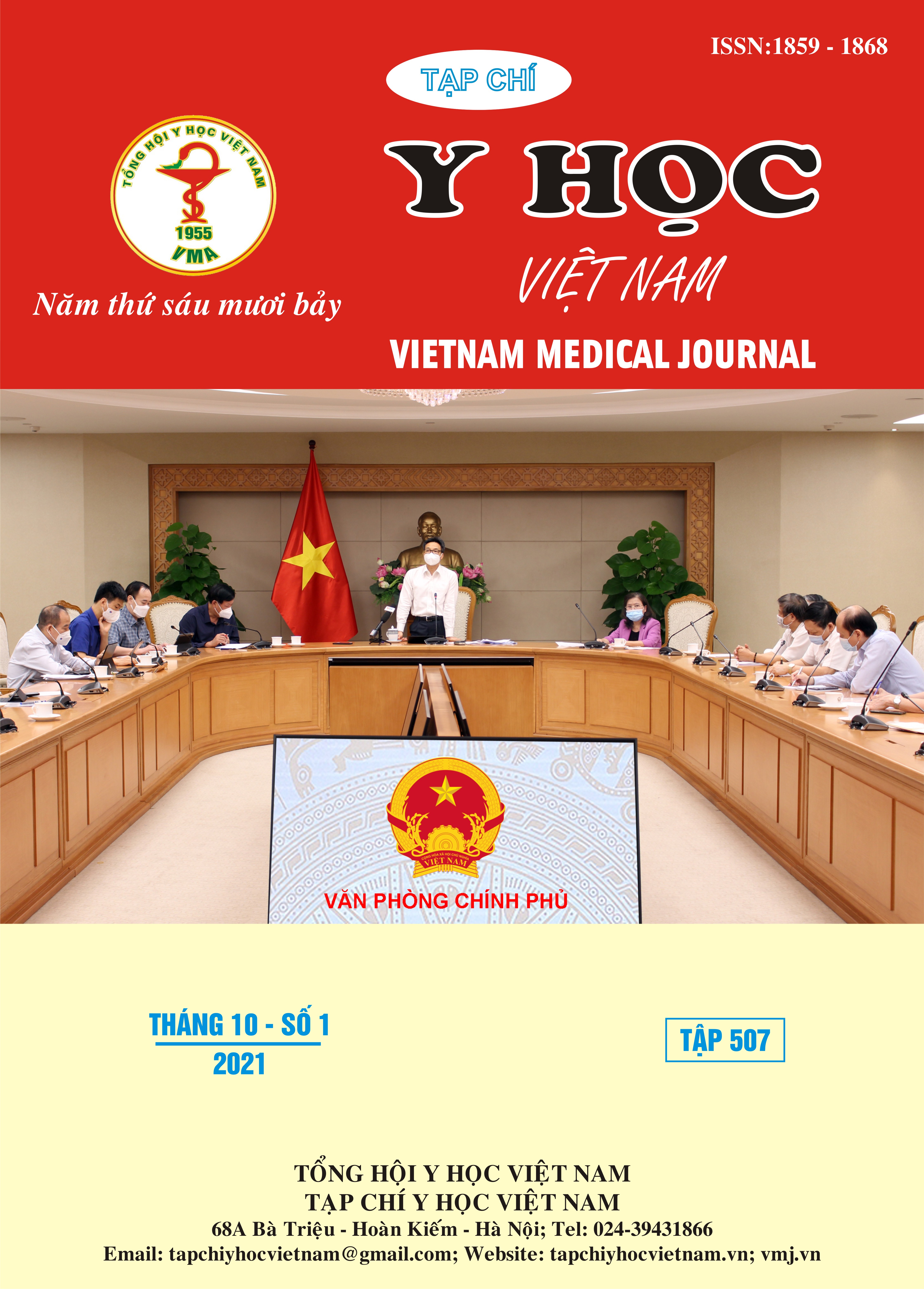THE ROLE OF DEXAMETHASONE IN EXPOSING THE ROUND WINDOW IN COCHLEAR IMPLANT SURGERY ON IMPEDANCE IFT AND NERVE RESPONSE ART
Main Article Content
Abstract
Objective: Evaluation of the role of Dexamethasone (DEX) in exposing the round window in cochlear implant surgery on impedance field telemetry (IFT) and auditory nerve response telemetry (ART). Methods: prospective intervention research on 33 patients having operated cochlear from 8/2020 to 8/2021 and was divided into 3 groups: pump DEX during exposingthe round window, electrode dip in DEX and the group doesn't use DEX. Results: The resultsimpedance field telemetry for the highest impedance at one electrode channel was 22,4(kΩ), the lowest was 1,21 (kΩ),the average value at all channels was 4,22(kΩ). The average impedance measured at the apical, middle, and basal electrode channels all achieved good results (<5kΩ), the lowest average impedance was measured at the dip DEX group with a value of 3.97 ± 0.88 ( kΩ), followed by the pump DEX group with a value of 4.27 ± 1.41 (kΩ), the highest was the group without DEX with a result of 4.48 ± 1.28 (kΩ), however the difference between the groups was not statistically significant with p> 0,05. The results of auditory nerve response telemetry (ART): the good response rate at the apical, middle, and basal electrode groups was 72,7; 81,8 and 84.8%. The results of auditory nerve response telemetry (ART) at the groups: pump DEX, electrode dip DEX and no DEX, the difference was not statistically significant with p> 0,05. Conclusion: the role of Dexamethasone (DEX) in exposing the round window in cochlear implant surgery on impedance field telemetry (IFT) and auditory nerve response telemetry (ART) was not statistically different from the control group.
Article Details
Keywords
Cochlear implant, dexamethasone, impedance field telemetry, auditory nerve response telemetry
References
2. Nguyễn Thị Hải Lý, Cao Minh Thành. Nghiên cứu khó khăn thường gặp trong đường vào cấy điện cưc ốc tai. Luận văn Thạc sĩ y học. 2017.
3. Cao Minh Thành, Nguyễn Thị Trang. Một số bất thường về cấu trúc giải phẫu thường gặp trong phẫu thuật cấy ốc tai điện tử. Tạp chí Tai Mũi Họng Việt Nam.2020; 49-59.
4. Toner FM, Sanli H, et al. Intraoperative Cochlear Implant Reinsertion Effects Evaluated by Electrode Impedance. Otology & Neurotology. 2020;41(6): e695-e699.
5. Wilk M, Hessler R, Mugridge K, et al. Impedance Changes and Fibrous Tissue Growth after Cochlear Implantation Are Correlated and Can Be Reduced Using a Dexamethasone Eluting Electrode. Yamamoto M, ed. PLoS ONE. 2016; 11(2): e0147552.
6. Fu- Wei,Tao- Hsin Tung, et al. Evolution of impedance values in cochlear implant patients after early switch-on. PLoS One. 2021; 16(2): e0246545.
7. Brill S, Müller J, Hagen R, et al. Site of cochlear stimulation and its effect on electrically evoked compound action potentials using the MED-EL standard electrode array. BioMed Eng OnLine. 2009; 8(1):40.
8. Ramos BF, Tsuji RK, Bento RF, et al. Hearing preservation using topical dexamethasone alone and associated with hyaluronic acid in cochlear implantation. Acta Oto-Laryngologica. 2015; 135(5): 473-477.


